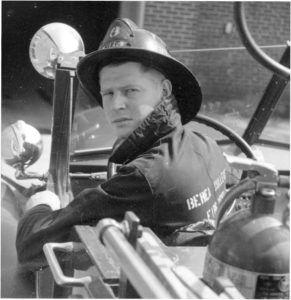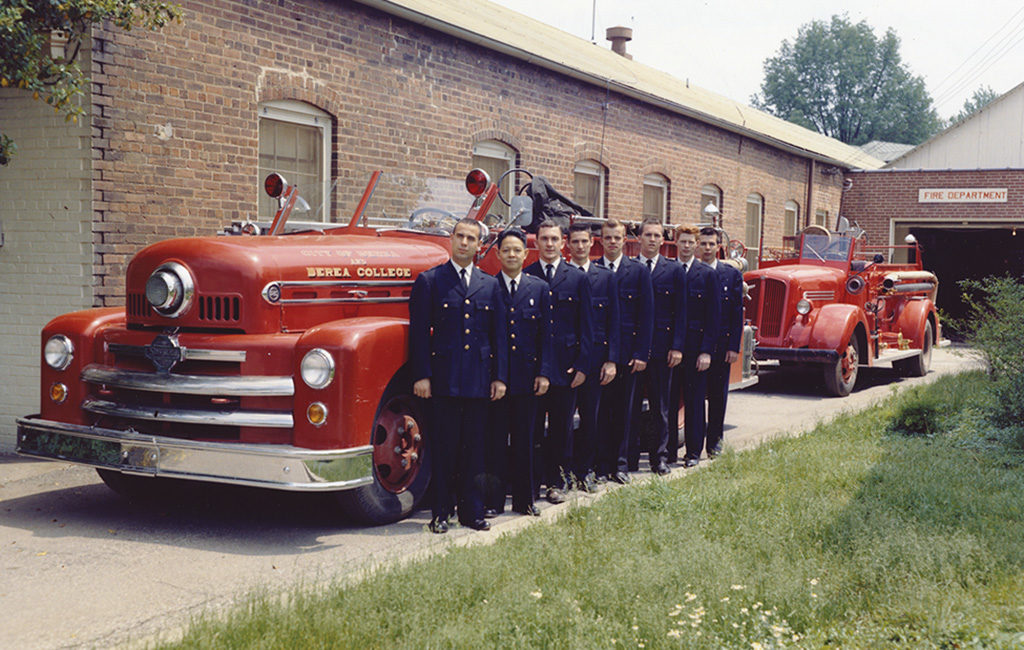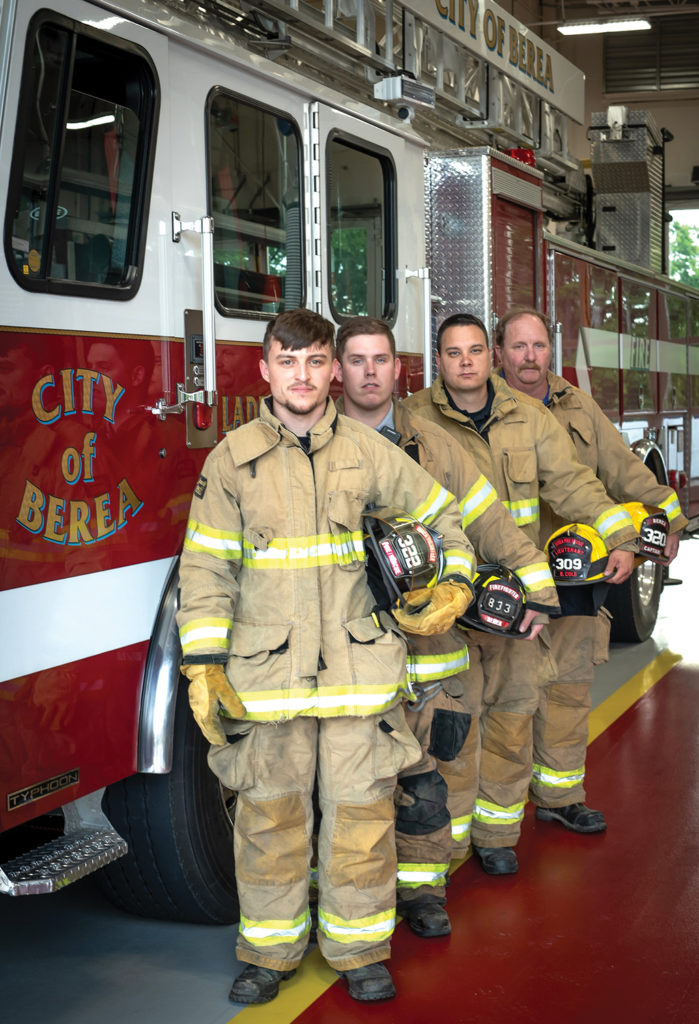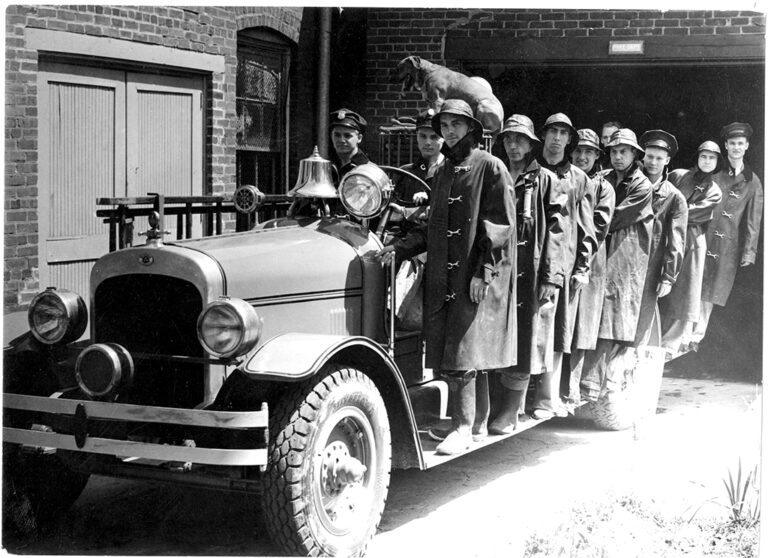It’s 1964, and a siren is whining across the Berea College campus. A small band of young men drop their books and sprint across the quad and all the way to Chestnut Street, where they jump onto the back of a student-driven fire truck. Off they ride toward some local danger.

“They didn’t have cars,” explains alumnus John Stephenson ’66, himself a volunteer. “There wasn’t any way to get to the fire, so you’d run across the street and catch the truck. Four or five could ride on the back.”
Noah Perry ‘64 and his brother Doug Perry ’62, lived at the campus fire department with six other young men, compensated only by free room and board and a sense they were fulfilling a commitment to their community. And once, all the fruitcake they could eat after responding to a fire at the bakery.
Otherwise, “it was typical dorm life,” Noah said, “but we also had the responsibility of maintaining the trucks, keeping them clean and fueled, keeping the water tanks full and the hoses in good shape.”

They had to keep themselves in good shape, too. “It was a long run from the other side of campus,” Perry said.
A ladder that required all eight of them to erect took some conditioning to control as well. The campus firemen lugged that ladder to the top of Blue Ridge residence hall on a regular basis for training, along with the heavy hoses.
For decades, Berea College had supplied the surrounding town with services typically provided by city governments. The College provided electricity, water and also the fire service. The students in the 1960s were led by John Wesley “Jay” Stephenson, who served as fire chief. Noah and Doug both served as the student fire chief, carrying the responsibility of assigning who drove the trucks, who ran the pump and who operated the hoses.

Jay’s son, John, who had grown up assisting the firefighters, volunteered while attending Berea. When his father be-came ill, he assumed the role of fire chief until the city took over the fire department in 1966.
“The city of Berea was really lucky to have the College running the fire department,” John said, “because they had students right there all the time and response time was really good. You sort of have to have it in your blood to want to help somebody. It was a challenge. Every fire or wreck was different.”
“It was an outstanding group of young men that lived in the fire department,” Perry added. “Berea College had a commitment to the safety and security of the entire area. The students in the fire department mirrored that commitment.”
Today, although Berea College hasn’t been in charge of the local fire service for 53 years, you’ll still find students volunteering down at the station.

Fire Chief Shawn Sandlin says nearly a dozen students have served at the department over the past five years.
“The students [who have volunteered] have done a very good job of balancing school and volunteering,” Sandlin said. “There’s a lot of training involved. It takes up quite a bit of time.”
To become a certified volunteer, the state requires a firefighter to complete 150 hours of training within two years. The Berea station offers volunteer training on Thursday evenings.
Though student volunteer firefighters no longer run out of their classes to catch the fire truck, transportation remains a challenge for them. Because first-year students are not permitted to have cars on campus, student volunteers tend to be older.

Asha Nanda ’18 spent two years volunteering at the Berea Fire Department. The public health major balanced training with classes and her labor position in the College’s Environmental Health and Safety office, where she conducted fire and chemical safety inspections.
“I talked to the fire chief and said I’m interested in learning this,” Asha said. “Any way you’ll train a girl? They were very happy to teach me.”
Asha finished her degree and her volunteer training, and went on to become a full-time firefighter in
Winchester, Ky.

Anna Whitaker Blanken ’15 volunteered in her hometown of Harlan, Ky., before volunteering at the Berea Fire Department her senior year. She relates the challenges of balancing classes, extracurricular activities and volunteering.
“It was difficult to do both school and firefighting,” she said. “Most of the calls I went on were on weekends or after my class day was done. You can’t just say to your professor, ‘Sorry, I’ve got to go fight a fire. See you later.’ Getting the training hours in is difficult.”
“The training requirements can be exhausting,” said Lieutenant Brad Cole ’11, Berea College Public Safety team leader, who also serves as the fire department’s training officer. “That doesn’t stop these students from responding to calls or getting the necessary training. They truly have a heart for helping people and for serving this community. That makes them special and true Bereans.”


